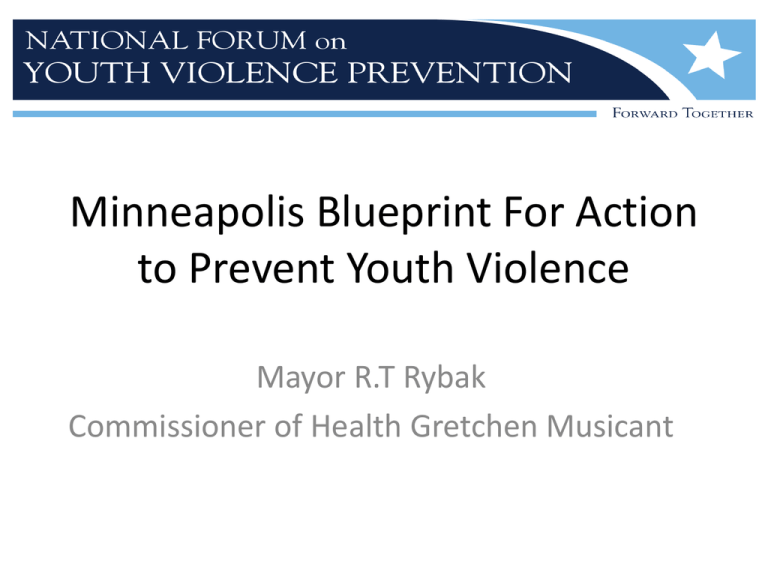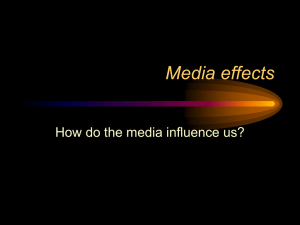
Minneapolis Blueprint For Action
to Prevent Youth Violence
Mayor R.T Rybak
Commissioner of Health Gretchen Musicant
Overview of Minneapolis, Minnesota
•
Rich History and Geography
•
Independent and Coordinated
Jurisdictional Structure
•
Ethnically Diverse
•
High Quality of Life
•
Many Disparities
• Health
• Employment
• Education
Background on Blueprint for Action
•
From 2003-2006 Homicide was the leading cause of death for
Minneapolis residents15-24– comprising nearly ½ the deaths
(N=80)
•
During that same time youth fire arm related injuries and
juvenile violent crime increased as well.
•
Need for a new approach to addressing youth violence
Developing the Blueprint for Action
•
In 2006 the City Council adopted a resolution declaring youth violence a public
health issue
•
A steering committee was formed to develop a multiyear, multi-sector plan to
prevent youth violence
•
The effort was chaired by the Mayor and leaders from 2 local foundations
•
Community members and youth were engaged in developing solutions
•
Best and promising practices were researched and evaluated
•
Plan was developed with 4 goals and 34 recommendations
Blueprint for Action to Prevent
Youth Violence
Goal 1: Every young person in Minneapolis is
supported by at least one trusted adult in their
family or their community
Blueprint for Action to Prevent
Youth Violence
2. Intervene at the first sign that
youth and families are at risk for or
involved in violence
Blueprint for Action to Prevent
Youth Violence
3. Do not give up on our kids; work
to restore and get them back on
track
Blueprint for Action to Prevent
Youth Violence
4. Recognize that violence is learned and can
be unlearned by reducing the impact of
violent messages in our media, culture and
entertainment
Blueprint Implementation
• 17 member Executive Committee appointed to
oversee implementation
• Youth Violence Prevention Coordinator position
created
• Work groups charged with implementation of
recommendations
Making Progress through Partnerships
•
School Resource Officers: Close coordination with police juvenile unit and the School
Resource Officers
•
Speak Up: Collaboration with Minneapolis Public Schools on an anonymous tip line
•
MYVIP: Hospital protocol to reach out to youth victims of violence
•
Street Reach: Utilization of parks staff for outreach to youth
•
North 4 Program: Collaboration with city employment and training and a community
based organization to engage and employ gang affiliated youth
•
Summer 612 Media Campaign: Foundation funding of Summer 612 – a youth driven
effort to counter the culture of violence
Measuring Impact & Signs of Progress
•
Annual city-wide results accountability process initiated (Results Minneapolis) 24
indicators identified around 4 goals
•
59% reduction in juvenile violent crime
•
66% reduction in incidents involving guns and juveniles
•
39% reduction in firearm related injuries in Minneapolis youth and young adults
•
57% increase in number of youth in STEP-UP and other city jobs programs
•
Significant drop in teen pregnancy rate
Key Challenges & Opportunities
• Sustainability and institutionalization
• Continued community engagement
• Building partnerships across jurisdictions
New Directions with National Forum
• Lessons learned from other cities strategic
planning processes
• Aligning our work and strategies with other
federal programs and policy initiatives
• Engaging new sectors (i.e. housing, business, etc.)
• Business and philanthropic engagement
For more information
Minneapolis Blueprint for Action to Prevent
Youth Violence
www.minneapolismn.gov/yvp










